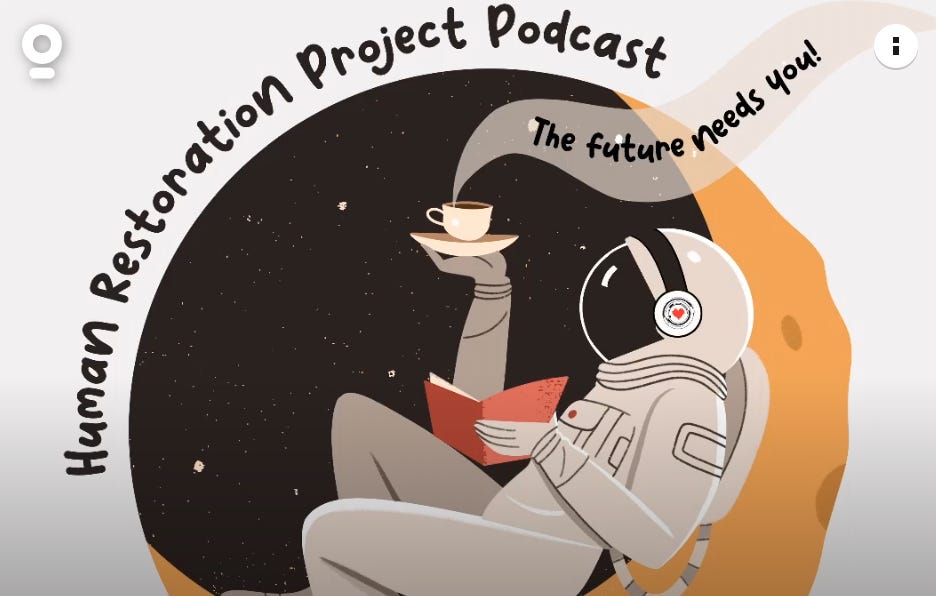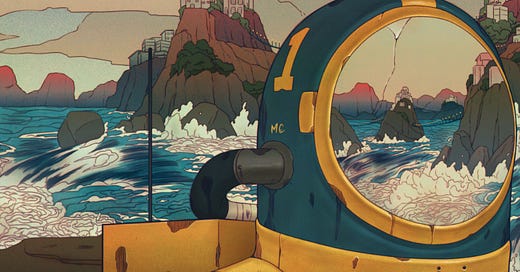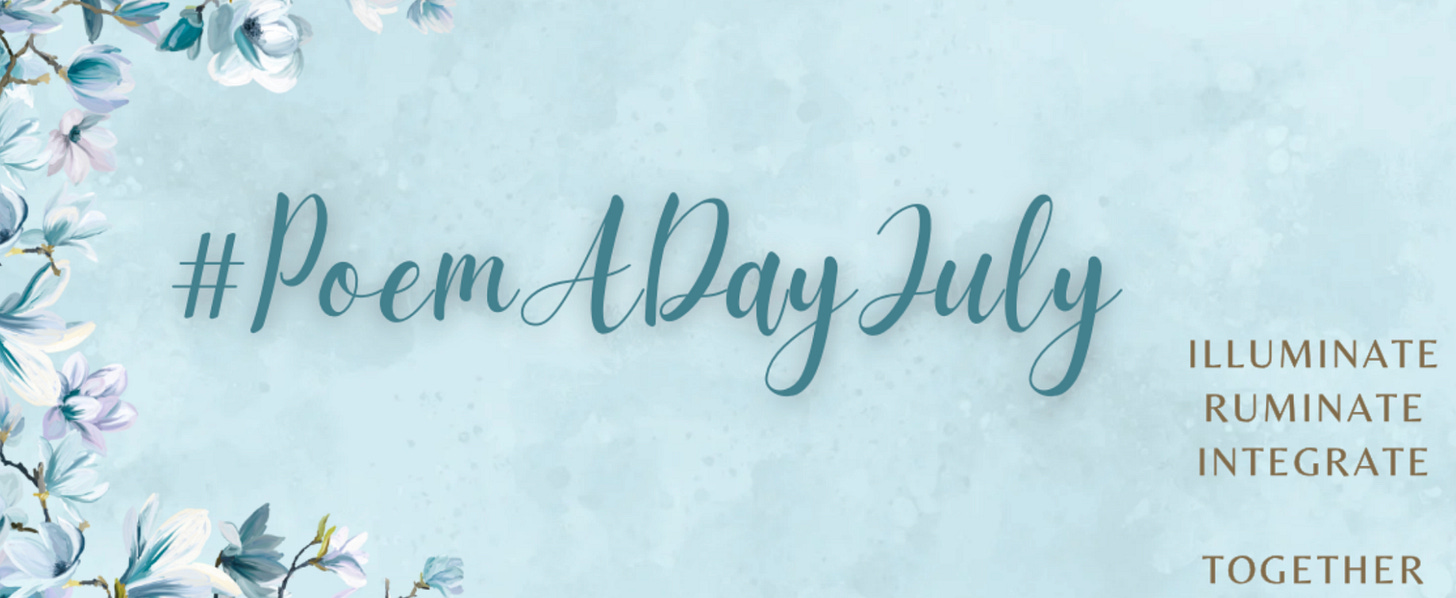The Difficult Margins of AI as a Teacher
(alternative title: The Important Margins of AI as a Teacher.)
“Do you know the meaning of logistics?”
This is the opening quote from one of my all-time favorite scenes from one of my all-time favorite shows that, logically, is adapted from one of my all-time favorite books: Station Eleven by Emily St. John Mandel.
“The path things take,” Miranda Carroll says, responding to an interview question for a position in a logistics company.
“Not the path,” the interviewer says, laughing kindheartedly. “The right path.”
He then stands with a pencil and a broad smile, explaining how the shortest path is not necessarily the right path when it comes to shipping; how the right path, he implies, of any shipment is inextricably linked to its particular contexts and surrounding dynamics.
Miranda—you guessed it: one of my all-time favorite characters!—reciprocates the smile in response.
“Oh, I understand.”
There are few things I fully understand about AI right now
But I find myself thinking about it a lot, bouncing from headline (it’s inevitable!) to headline (it’s harmful!) as it all becomes a bit of a blur—but a magnetic blur, too, with its own gravity, seemingly.
This is perhaps why I began my summer by reading not a book from my growing stack of novels to explore but instead Brett Vogelsinger’s second education book: Artful AI in Writing Instruction. This is perhaps why that book is now thoroughly dog-eared and highlighted, and this is perhaps why I finagled Brett into hopping on the podcast to talk more about this topic that continues to live in my head—as you can see in this moment especially:
To put my cards on the table, this is the impasse I’m at as a teacher:
I really love where my classroom is at—including the learning and writing taking place within it! Honestly, I feel great about what’s going on and I didn’t use AI at all as a teacher or bring it into the classroom—and students largely agreed with that choice, too.
I really don’t think that my own “status quo” of avoiding AI as a tool is sustainable going forward, both in terms of the impending tidal wave of AI adoption that is already sweeping across education as well as the broader social integration of AI into so many facets of our lives outside of school.
That impasse is why I value learning from folks like Brett so much and continuing to read leaders in this space like , who this past weekend shared an important post titled Adapting To AI Is Not Adopting AI:
All of us in higher ed have come to terms with generative AI as yet another problematic thing we all must confront in our daily working lives. The way forward begins with an AI-aware faculty. —Marc Watkins
This is the struggle I’m reckoning with this summer: how to adapt to AI in a way that I feel confident is what is best for my students and classroom when there is increasing pressure beyond that classroom towards adoption—adoption that I don’t feel good at all about?
What is the right path? I don’t know.

“I need you to be a part of this conversation, too.”
Last summer, teacher and educator Chanea Bond made a strong declaration about her own classroom that was laid out thoughtfully in this Edutopia piece: “Why I’m Banning Student AI Use This Year.” Needless to say, a lot of folks had a lot of things to say in response. (Don’t read that comment section.)
In a conversation with the Human Restoration Project this past weekend, Chanea elaborated more about her thinking after this school year on navigating the topic of AI in her conversations with students:
When we got to analyzing sources, students were like, oh, well now it’s AI. And I’m like no, because I need you to be a part of this conversation, too. And so we had to take a huge step back and we made slides about different facets of our identity. And every reflection piece after that was, where are you in this piece of writing? Where are you in this, in your analysis of this text? What about you shows up? Where can I point to your identity here? —Chanea Bond
This was a conversation I needed to hear, not only in reaffirming what I love about my own classroom but in underscoring what needs to be part of that “right path” for me going forward.
As Chanea shared later in that conversation, “in a world where AI can do everything, well, that means we have an additional responsibility to do more human things.”
What about you shows up?
The right path better have a good answer to that question.
The power of (and danger of) the margins
I think many of us still carry with us a handful of ideas that we first encountered in college, and one of mine was from a religious studies course that included a focus on the anthropologist Mary Douglas. In her book Purity and Danger, she observed how “formlessness” itself could be a place of power, “some dangerous, some good” (p. 118), going on to write the following:
So many ideas about power are based on an idea of society as a series of forms contrasted with surrounding non-form. There is a power in the forms and other power in the inarticulate area, margins, confused lines, and beyond the external boundaries. —Mary Douglas, Purity and Danger (p. 122)
This strikes me as a great way to explain the moment we are in regarding AI and education. There is a formlessness within AI, I think—a fast-evolving technology that we are trying to understand despite the fact that its evolution makes it in many ways elusive to the very understanding we crave.
When it comes to how we respond, though, it feels like many are responding to that formlessness by trying to draw lines in ever-shifting sand and in doing so cling to the lines they already know despite the formlessness coming to define our contexts.
In a post on LinkedIn, noted recently that “If AI implementation were a spectrum, I see people disappearing at both ends of it.” Whether that is advocating for full-scale AI adoption and gaslighting critics as protesting the inevitable or dismissing AI as a temporary fad or something not pertinent to education, it feels like many are allowing their response to AI become how they themselves identify as educators.
Seriously: go look at how many LinkedIn bios begin with some sort of AI bravado; go to any education conference and do a quick count of how many booths mention some sort of integration of AI in their product as they try to sell you an edu-solution.
At the same time, it feels like are just as many educators who seem to be defining their work and their classrooms as resistant to AI—in a way reciprocating that centering of AI even as they work to combat it.
All of this makes sense, I think, as we go back to the work of Mary Douglas: in a potentially paradigmatic shift in education, there is of course opportunity—but also a lot of anxiety and emotional weight, including frustration at having to adapt in the first place to something that many understandably view as a negative force. (This much-discussed recent study gives credence to the possibility that this is very much negative for learners.)
I am one of those frustrated, by the way, and also quite skeptical from an ethical standpoint as far as what is the “right path” forward for the classroom.
And I don’t anticipate that changing any time soon, either.
The right path forward is…
Very unclear to me as a teacher. (Remember that impasse?)
I read and value what Brett has to share from his explorations and then I listen and value what Chanea has to share from her work and then I remind myself that it is summer break and go back to the story of Station Eleven that has for some time enchanted me.
The character Miranda Carroll, in both the book and the televised adaptation, works for a logistics company but is also an artist, captivated by her own graphic novel project called…
You guessed it: Station Eleven.
This meant that for HBO’s adaptation, they actually hired the artist Maria Nguyen to create a pages of the fictional Miranda Carroll’s graphic novel as described in the book. Quite a project to pursue as an artist, right?
And so their main message to me was, “Do it how you want to do it. Draw how you want to draw. If we give you an image, you can get inspiration from that, but we don’t want to give you any directions. We want you to read this and just do whatever the heck you think is right. —Maria Nguyen
This graphic novel is the heart of the show—in many ways, I’d offer, like how the classroom is the heart of education—and Nguyen was given the most daunting of tasks in having to create something meaningful out of that formlessness.
And she did. Something powerful, if also incomplete—since she only was tasked with creating the pages needed for the show.
“We open doors,” the final pages of Nguyen’s still-incomplete project read. “We remember what we loved.”
As I’ll say one more time: I really don’t know what the right path forward is for my own classroom, and education more broadly, when it comes to AI.
Just like Nguyen’s graphic novel project was never actually completed, this post is not going to offer a solution or clear conviction.
I don’t have one right now.
For now, I am instead going to keep treading waters in the margins. They are an exhausting place to be but also an important place to be. Plus, as advised, we need to keep reading and reflecting on this topic as educators, no matter our position. And listening, too, including to our students.
And remembering what we love.
Brett, talking about his classroom exploration with AI with me: “I don’t think I ever talked as much about why we become educated, why we learn to write, what is the value of our voice as I should have. But now I have to.”
Chanea, talking about her resistance to AI with the HRP podcast: “I had to explain to them why we are doing the things […] What is the intentionality behind it? I had to be so intentional and so explicit, right?”
And remembering what we love.
The right path forward as a teacher, I think, begins by affirming why we do what we do in the classroom, the purpose of the learning taking place and, yes, why we love it. To talk about it confidently and consistently in our classrooms, and to hold ourselves accountable to that purpose and love in how we design our classrooms and the learning that takes place in them.
Where AI fits in that? I don’t know and I’m not sure any of us will actually know at any point in the near future, which means that some teachers will make some choices with AI and other teachers will make other choices and we will need to keep talking with and learning from each other because, well, that’s way better than the alternative.
The margins of any conversation are a difficult place to abide within, but I believe they are the most powerful place to be right now when it comes to AI and education.
So let’s create community within them, and figure this out together going forward.
A few more things
Before signing off for a bit of a summer stretch as far as blog posts, I wanted to make sure I shared out a few things that have resonated of late with me and/or that I’m really excited about:
#PoemADayJuly on Bluesky: Brett and Chanea (yep, same ones!) and I are going to be leading a “poetry slow read” throughout July on Bluesky—sharing out one poem a day for folks to read and discuss and, potentially, bring into their own classrooms in the upcoming year. This is a great way to learn from and lean into community, too, so if you’re on Bluesky, join in!
“The Death of the Student Essay—and the Future of Cognition”: if you aren’t tired of all things AI (and I promise, we will be talking about a lot of other stuff here on The Broken Copier over the next month) then this essay by is a great piece: “Above all, however, my eulogy for the student essay is a lamentation for what could be lost.”
“Why I Teach Literary Theory to High Schoolers (and you should too)”: I’m running out of word count, so I’ll just say that I read this piece by and immediately opened up a blank unit plan template to begin redesigning my first semester for next year. If you teach secondary ELA, read this!
(Finally: go read Station Eleven by Emily St. John Mandel and then watch the adapted series on HBO. You won’t be disappointed.)









Great reflection and seconding the Station Eleven book and show. The show is probably my favorite of the last decade.
This piece resonated with me hugely. I’m a literacy, English and Media teacher and I’m finding myself interested and repulsed at the same time.